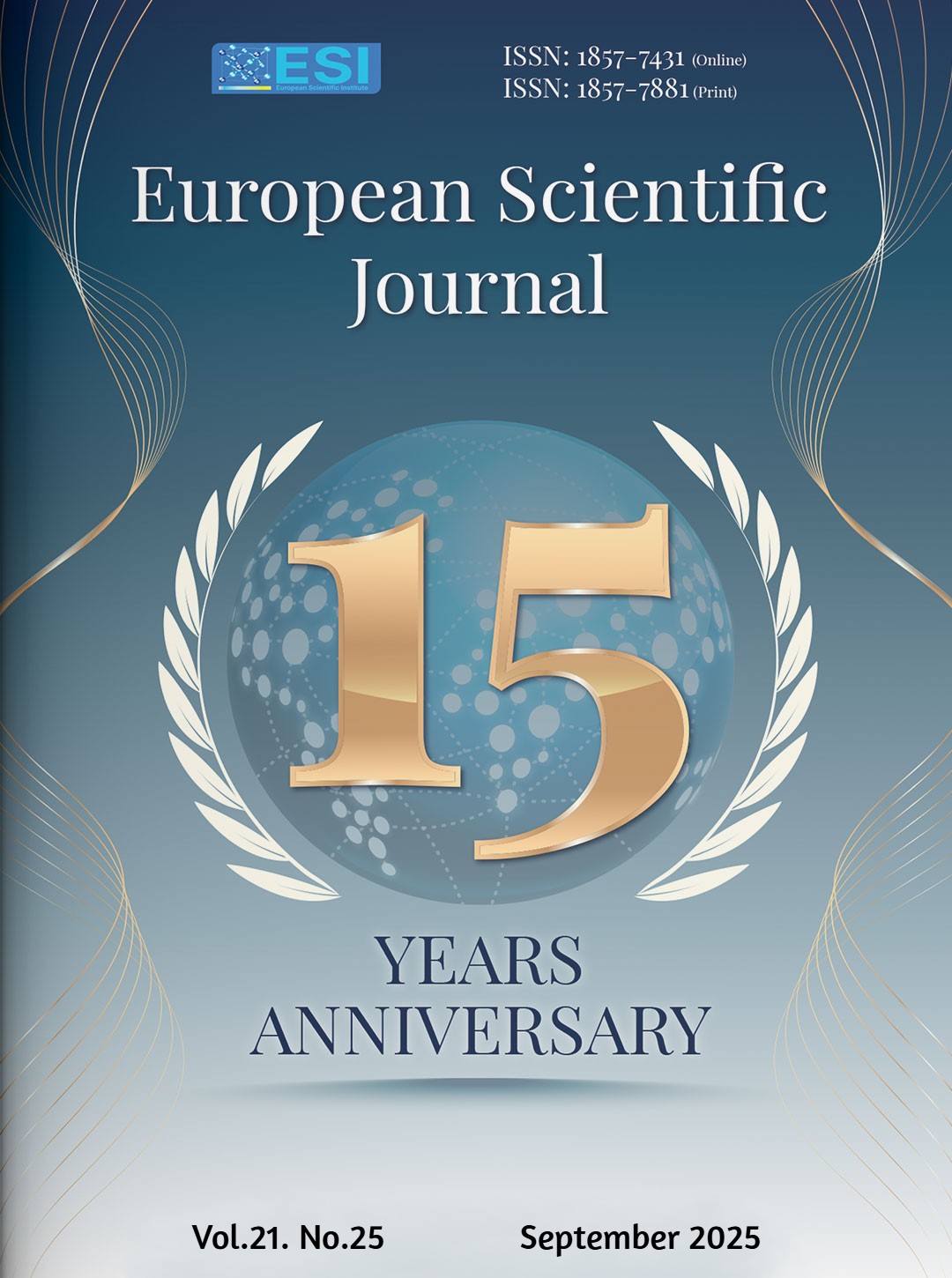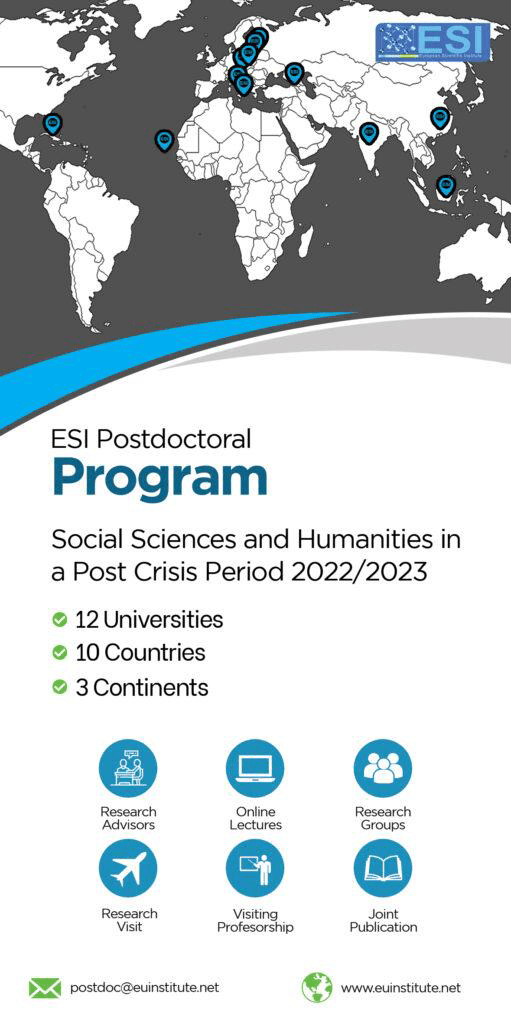Framing the Decision: An Experimental Study of Managerial Judgments after Leadership Training
Abstract
The present study aims to contribute to the interdisciplinary discourse within behavioural economics and managerial psychology by examining the role of cognitive biases in managerial decision-making. Specifically, it investigates the framing effect - an established cognitive heuristic - by exploring how identical market information presented in either a gain-oriented (positive) or loss-oriented (negative) frame influences managerial investment decisions differently. A fundamental objective of the present study is to examine the moderating effect of transformational leadership training in diminishing vulnerability to framing-induced distortions. A total of 45 managers employed by the university participated in the research study. All participants initially underwent a standardised four-hour training session focusing on the principles of transformational leadership. Participants were then randomly allocated to one of two experimental conditions. Each group was provided with investment scenarios of an identical nature, but with different informational framing: one emphasised potential gains (positive framing), while the other foregrounded potential risks and uncertainties (negative framing). Participants were then invited to respond to the following question: 'Should the company enter the market under these conditions?', and to provide a concise written rationale to support their response. The present study employs a mixed-methods experimental design, integrating quantitative and qualitative analytical approaches. Quantitative analysis revealed no statistically significant differences in decision outcomes between framing conditions (χ² ≈ 0.045, p > 0.05). However, a subsequent qualitative content analysis of the open-ended justifications revealed that participants' cognitive reasoning was markedly sensitive to the framing manipulation. The respondents who were exposed to positive framing predominantly employed opportunity-centric rationales, whereas those exposed to negative framing articulated risk-averse arguments. These findings are consistent with the theoretical propositions of prospect theory (Tversky & Kahneman, 1981) and the risk-as-feelings hypothesis (Loewenstein et al., 2001), both of which emphasise the interaction between cognitive heuristics and emotional responses in decision-making contexts. It is noteworthy that the absence of significant outcome variation may imply that transformational leadership training has mitigated the behavioural impact of framing. Thematic analysis suggests that there are nuanced shifts in cognitive processing and increased resilience to framing effects among trained participants. The study under discussion highlights the importance of cognitive framing in shaping managerial judgements and the potential of leadership-oriented cognitive interventions to mitigate such biases. The present study makes a novel contribution to the extant literature on behavioural decision-making, executive cognition and leadership development within organisational contexts.
Downloads
Metrics
PlumX Statistics
References
2. Diacon, S. R., & Hasseldine, J. (2007). Framing effects and risk perception: The effect of prior performance presentation on investment fund choice. Journal of Economic Psychology, 28(1), 31–52. https://doi.org/10.1016/j.joep.2006.01.002
3. Diacon, S., & Hasseldine, J. (2007). Framing effects and risk perception: The effect of prior performance presentation format on investment fund choice. Journal of Economic Psychology, 28(1), 31–52. https://doi.org/10.1016/j.joep.2006.01.003
4. Druckman, J. N. (2001). The implications of framing effects for citizen competence. Political Behavior, 23(3), 225–256. https://doi.org/10.1023/A:1015006907312
5. Fan, X. (2017). Decision-making and the framing effect in a foreign and native language. Frontiers in Psychology, 8, 744. https://doi.org/10.3389/fpsyg.2017.00744
6. Fan, Y. (2017). The framing effect, cognitive style and financial decision making: A study on Chinese individual investors. Frontiers in Psychology, 8, 854. https://doi.org/10.3389/fpsyg.2017.00854
7. Gong, J., Zhang, Y., Yang, Z., Huang, Y., Feng, J., & Zhang, W. (2013). The framing effect in medical decision-making: A review of the literature. Psychology, Health & Medicine, 18(6), 645–653. https://doi.org/10.1080/13548506.2013.766352
8. Gong, Y., Zhang, L., & Sun, X. (2013). The framing effect in medical decision making: A review. Chinese Medical Journal, 126(10), 1968–1971.
9. Gong, Y., Zhang, L., & Sun, X. (2013). The framing effect in medical decision making: A review. Chinese Medical Journal, 126(10), 1968–1971.
10. Gonzalez, C., Ben-Asher, N., Martin, J. M., & Dutt, V. (2005). A cognitive model of dynamic decision making in real-time. Dynamic Decision Making Laboratory Technical Report. Carnegie Mellon University.
11. Gonzalez, C., Dana, J., & Koshino, H. (2005). The framing effect and risky decisions: Examining cognitive functions with fMRI. Journal of Economic Psychology, 26(1), 1–20.
12. Gonzalez, C., Dana, J., & Koshino, H. (2005). The framing effect and risky decisions: Examining cognitive functions with fMRI. Journal of Economic Psychology, 26(1), 1–20. https://doi.org/10.1016/j.joep.2003.10.002
13. Hsee, C. K., & Li, N. (2022). A framing effect in the judgment of discrimination. Psychological Science, 33(6), 879–892. https://doi.org/10.1177/09567976221094201
14. Hsee, C. K., & Li, N. (2022). Judgment under framing and the illusion of understanding. Annual Review of Psychology, 73, 573–595. https://doi.org/10.1146/annurev-psych-021521-051410
15. Hsee, C. K., & Li, X. (2022). A framing effect in the judgment of discrimination. Proceedings of the National Academy of Sciences, 119(47), e2205988119. https://doi.org/10.1073/pnas.2205988119
16. Ibrahim, R., & Saeed, A. (2025). Sustainability framing and consumer behavior: A systematic review. Journal of Sustainable Marketing, 12(1), 45–62.
17. Jin, Y., Wu, M., & Zhang, Q. (2023). Cognitive effort modulates framing effects in digital media environments: An eye-tracking and fMRI study. Journal of Behavioral Decision Making, 36(4), 560–575.
18. Kahneman, D. (2011). Thinking, fast and slow. Farrar, Straus and Giroux.
19. Kahneman, D., & Tversky, A. (1979). Prospect theory: An analysis of decision under risk. Econometrica, 47(2), 263–291. https://doi.org/10.2307/1914185
20. Kahneman, D., & Tversky, A. (1979). Prospect theory: An analysis of decision under risk. Econometrica, 47(2), 263–291. https://doi.org/10.2307/1914185
21. Kahneman, D., & Tversky, A. (1981). The framing of decisions and the psychology of choice. Science, 211(4481), 453–458. https://doi.org/10.1126/science.7455683
22. Kühberger, A. (1998). The influence of framing on risky decisions: A meta-analysis. Organizational Behavior and Human Decision Processes, 75(1), 23–55.
23. Levin, I. P., & Gaeth, G. J. (1988). How consumers are affected by the framing of attribute information before and after consuming the product. Journal of Consumer Research, 15(3), 374–378. https://doi.org/10.1086/209174
24. Levin, I. P., & Gaeth, G. J. (1988). How consumers are affected by the framing of attribute information before and after consuming the product. Journal of Consumer Research, 15(3), 374–378. https://doi.org/10.1086/209174
25. Levin, I. P., Schneider, S. L., & Gaeth, G. J. (1998). All frames are not created equal: A typology and critical analysis of framing effects. Organizational Behavior and Human Decision Processes, 76(2), 149–188. https://doi.org/10.1006/obhd.1998.2804
26. Levin, I. P., Schneider, S. L., & Gaeth, G. J. (1998). All frames are not created equal: A typology and critical analysis of framing effects. Organizational Behavior and Human Decision Processes, 76(2), 149–188. https://doi.org/10.1006/obhd.1998.2804
27. Levin, I. P., Schneider, S. L., & Gaeth, G. J. (1998). All frames are not created equal: A typology and critical analysis of framing effects. Organizational Behavior and Human Decision Processes, 76(2), 149–188. https://doi.org/10.1006/obhd.1998.2804
28. Li, F., & Ling, Y. (2015). The impact of framing on online consumer behavior. Open Journal of Business and Management, 3, 95–100. https://doi.org/10.4236/ojbm.2015.31010
29. Li, X. Y., & Ling, W. Q. (2015). How framing effect impact on decision making on internet shopping. Open Journal of Business and Management, 3(1), 96–108. https://doi.org/10.4236/ojbm.2015.31010
30. Lincă, A. (2016). Cognitive control and the framing effect: The role of education and analytical thinking. Procedia - Social and Behavioral Sciences, 217, 1134–1140. https://doi.org/10.1016/j.sbspro.2016.02.131
31. Lincă, F. I. (2016). The relationship between the risk decision making and framing effect. Romanian Journal of Cognitive Behavioral Therapy and Hypnosis, 3(2), 16–23.
32. Lincă, F. I. (2016). The relationship between the risk decision making and framing effect. Romanian Journal of Cognitive Behavioral Therapy and Hypnosis, 3(2), 16–21.
33. Loewenstein, G., Weber, E. U., Hsee, C. K., & Welch, N. (2001). Risk as feelings. Psychological Bulletin, 127(2), 267–286. https://doi.org/10.1037/0033-2909.127.2.267
34. Loewenstein, G., Weber, E. U., Hsee, C. K., & Welch, N. (2001). Risk as feelings. Psychological Bulletin, 127(2), 267–286. https://doi.org/10.1037/0033-2909.127.2.267
35. Malenka, D. J., Baron, J. A., Johansen, S., Wahrenberger, J. W., & Ross, J. M. (1993). The framing effect of relative and absolute risk. Journal of General Internal Medicine, 8(10), 543–548. https://doi.org/10.1007/BF02599636
36. Maner, J. K., Richey, J. A., Cromer, K., Mallott, M., Lejuez, C. W., Joiner, T. E., & Schmidt, N. B. (2007). Dispositional anxiety and risk-avoidant decision-making. Personality and Individual Differences, 42(4), 665–675. https://doi.org/10.1016/j.paid.2006.08.016
37. Maner, J. K., Richey, J. A., Cromer, K., Mallott, M., Lejuez, C. W., Joiner, T. E., & Schmidt, N. B. (2007). Dispositional anxiety and risk-avoidant decision-making. Personality and Individual Differences, 42(4), 665–675. https://doi.org/10.1016/j.paid.2006.08.016
38. Milkman, K. L., Chugh, D., & Bazerman, M. H. (2009). How can decision making be improved? Perspectives on Psychological Science, 4(4), 379–383. https://doi.org/10.1111/j.1745-6924.2009.01142.x
39. Niehaus, G., & Shrider, D. (2014). Framing and the disposition effect: Evidence from mutual fund investor redemption behaviour. Quantitative Finance, 14(4), 683–697. https://doi.org/10.1080/14697688.2013.819114
40. Niehaus, G., & Shrider, D. G. (2014). Framing and the disposition effect: Evidence from mutual fund investor redemption behavior. Journal of Financial Markets, 18, 77–89. https://doi.org/10.1016/j.finmar.2013.07.001
41. Osmont, A., Cassotti, M., Agogué, M., Houdé, O., & Moutier, S. (2015). Does ambiguity aversion influence the framing effect during decision making? Psychonomic Bulletin & Review, 22(2), 572–577. https://doi.org/10.3758/s13423-014-0688-0
42. Osmont, A., Rozenblit, L., & Leland, J. (2014). Ambiguity and framing effects in risky choice. Psychonomic Bulletin & Review, 21(3), 800–807. https://doi.org/10.3758/s13423-014-0688-0
43. Paladino, A. (2024). The influence of question structure on framing effects: Implications for managerial decision-making. Journal of Managerial Psychology, 39(2), 213–230.
44. Petrescu, D. C., Tudor, L., & Popescu, A. (2023). Framing sustainability claims: Attribute framing effects on product evaluations. European Journal of Marketing, 57(7), 1789–1812.
45. Piñon, A., & Gambara, H. (2005). A meta-analytic review of framing effect: Risky, attribute and goal framing. Psicothema, 17(2), 325–331. http://www.redalyc.org/articulo.oa?id=72717222
46. Piñon, A., & Gambara, H. (2005). A meta-analytic review of framing effect: Risky, attribute and goal framing. Psicothema, 17(2), 325–331.
47. Slovic, P., Finucane, M. L., Peters, E., & MacGregor, D. G. (2002). The affect heuristic. Heuristics and biases: The psychology of intuitive judgment, 397–420.
48. Slovic, P., Finucane, M. L., Peters, E., & MacGregor, D. G. (2002). The affect heuristic. In T. Gilovich, D. Griffin, & D. Kahneman (Eds.), Heuristics and biases: The psychology of intuitive judgment (pp. 397–420). Cambridge University Press.
49. Slovic, P., Finucane, M., Peters, E., & MacGregor, D. G. (2002). The affect heuristic. In T. Gilovich, D. Griffin, & D. Kahneman (Eds.), Heuristics and biases: The psychology of intuitive judgment (pp. 397–420). Cambridge University Press.
50. Smith, S. M., & Levin, I. P. (1996). Need for cognition and choice framing effects. Journal of Behavioral Decision Making, 9(4), 283–290.
51. Stanovich, K. E., & West, R. F. (2000). Individual differences in reasoning: Implications for the rationality debate? Behavioral and Brain Sciences, 23(5), 645–665.
52. Stark, E., Baldwin, A. S., Hertel, A. W., & Rothman, A. J. (2017). Understanding the framing effect: Do affective responses to decision options mediate the influence of frame on choice? Journal of Risk Research, 20(12), 1585–1597. https://doi.org/10.1080/13669877.2016.1200654
53. Stark, E., Baldwin, A. S., Hertel, A. W., & Rothman, A. J. (2017). Understanding the framing effect: Do affective responses to decision options mediate the influence of frame on choice? Journal of Risk Research, 20(12), 1585–1597. https://doi.org/10.1080/13669877.2016.1200654
54. Stark, L., Müller, T., & Vossen, R. (2017). Emotional framing effects on risk-taking behavior. Frontiers in Psychology, 8, 2196. https://doi.org/10.3389/fpsyg.2017.02196
55. Tao, H., Liu, J., & Wang, X. (2022). Goal framing and emotional valence: Effects on persuasive communication effectiveness. Communication Research, 49(3), 411–432.
56. Tversky, A., & Kahneman, D. (1981). The framing of decisions and the psychology of choice. Science, 211(4481), 453–458. https://doi.org/10.1126/science.7455683
57. Tversky, A., & Kahneman, D. (1981). The framing of decisions and the psychology of choice. Science, 211(4481), 453–458. https://doi.org/10.1126/science.7455683
58. Tversky, A., & Kahneman, D. (1986). Rational choice and the framing of decisions. Journal of Business, 59(4), S251–S278. https://doi.org/10.1086/296365
59. Ventre, V., Sbardella, A., & Ferraris, A. (2023). Framing effects in multi-criteria decision making: An application to investment product preferences. Annals of Operations Research, 322, 259–285. https://doi.org/10.1007/s10479-022-05142-z
Copyright (c) 2025 Yasin Aksoy, Ender Mehmet Sahinkoc

This work is licensed under a Creative Commons Attribution 4.0 International License.








